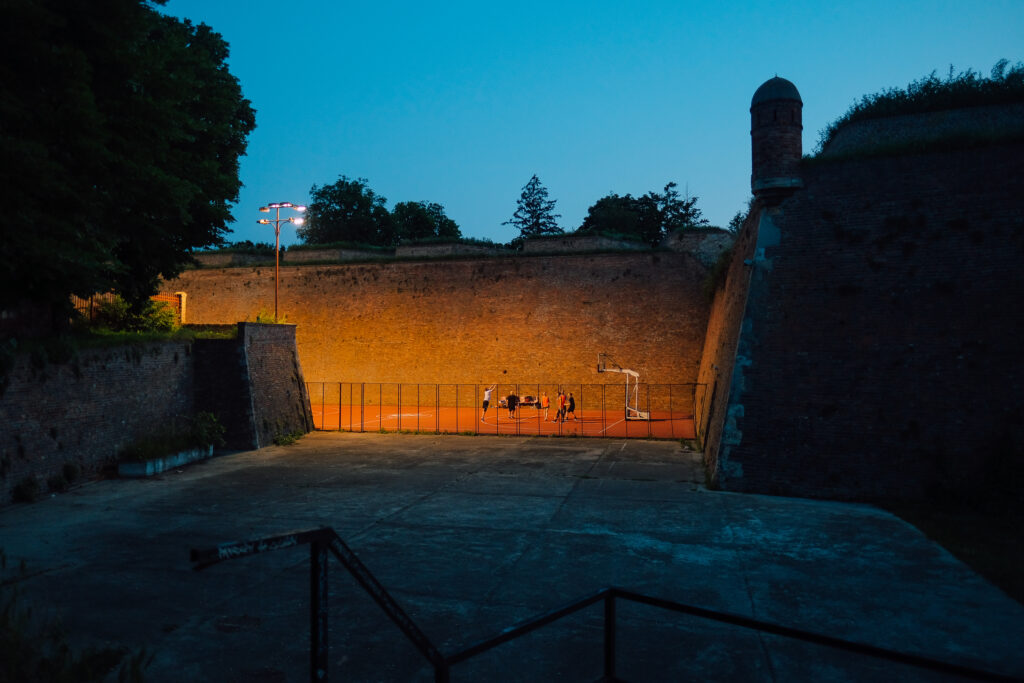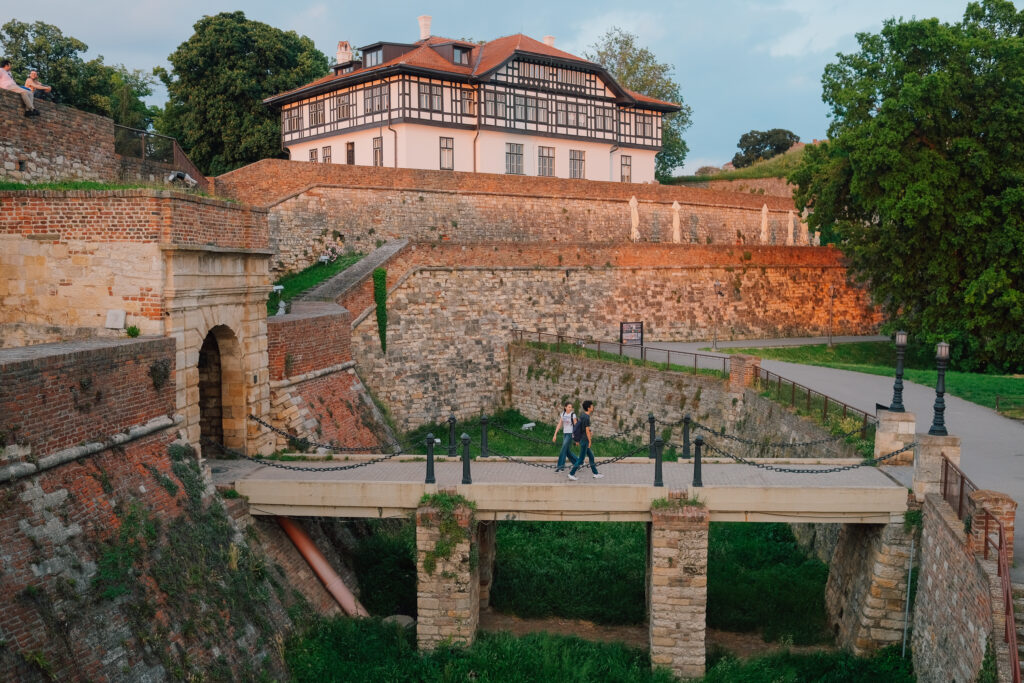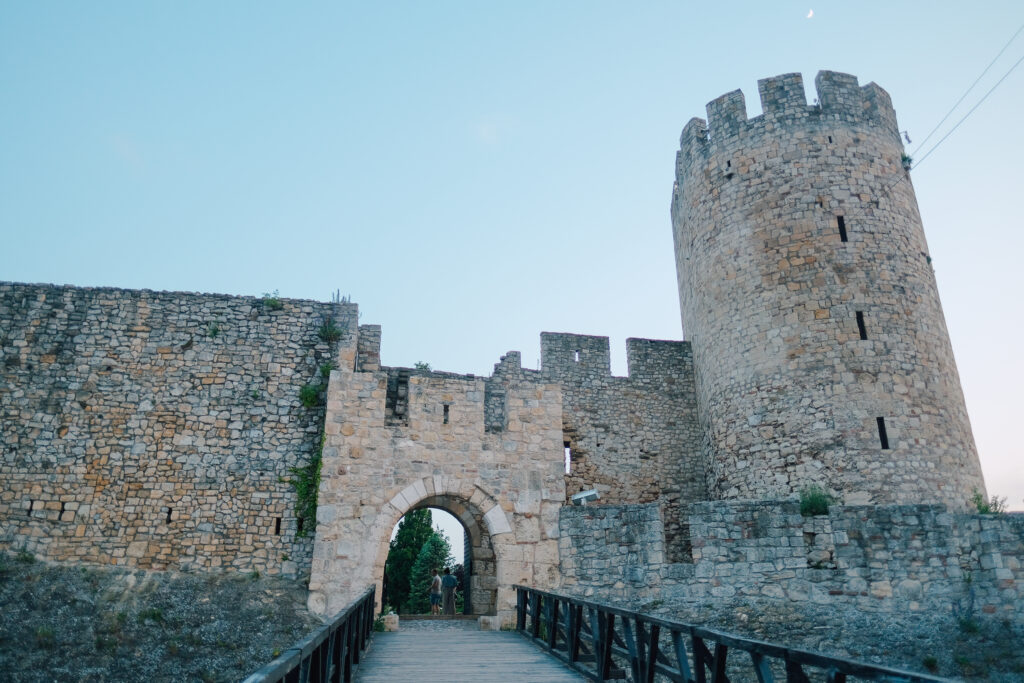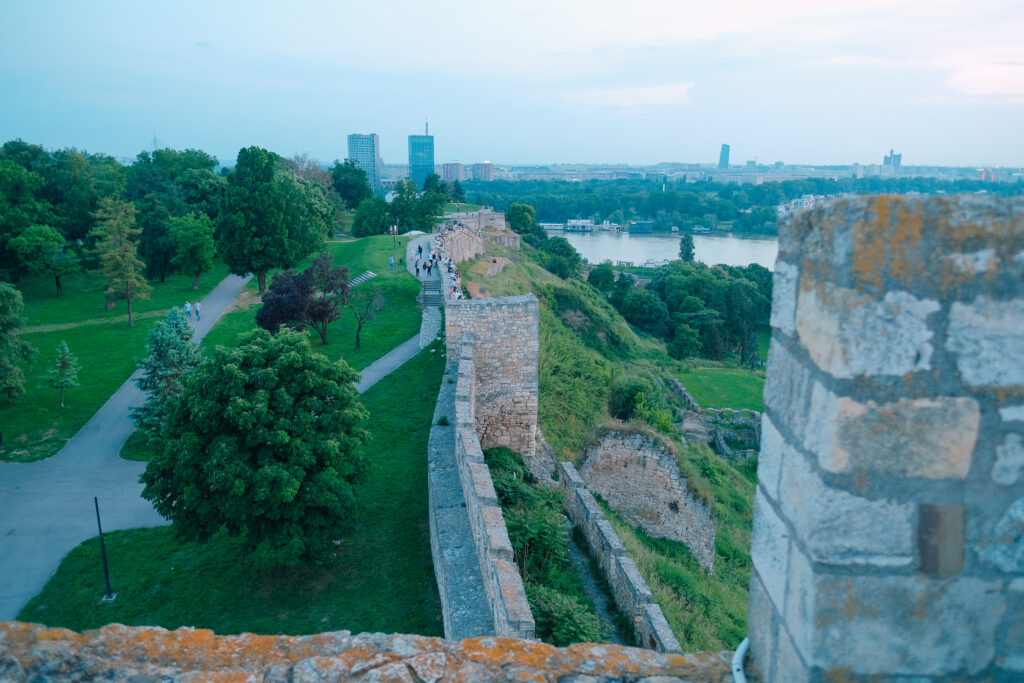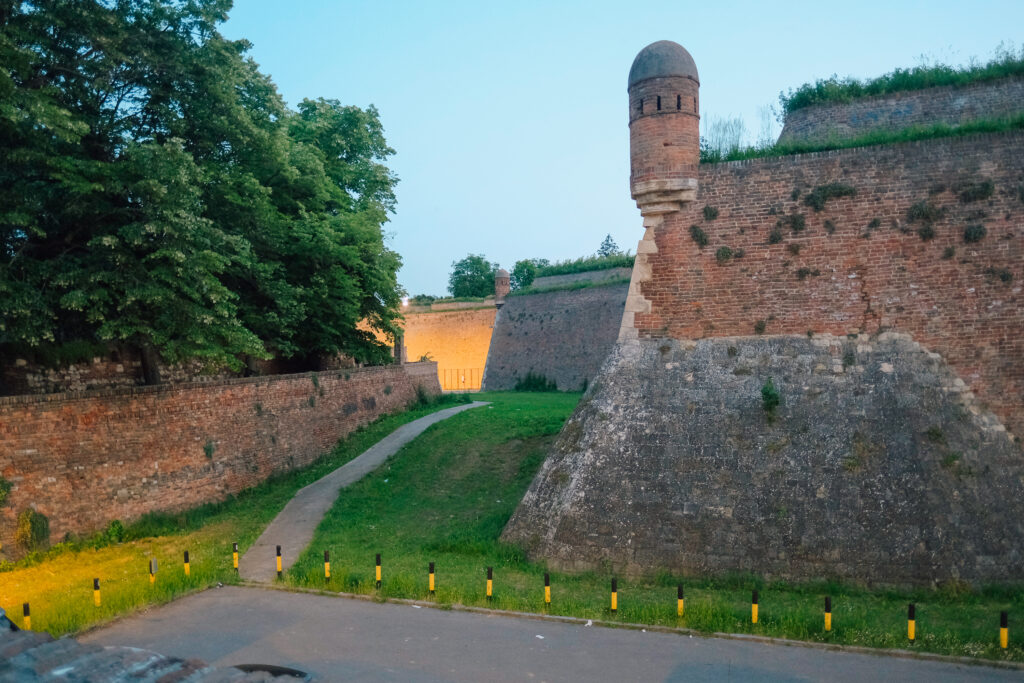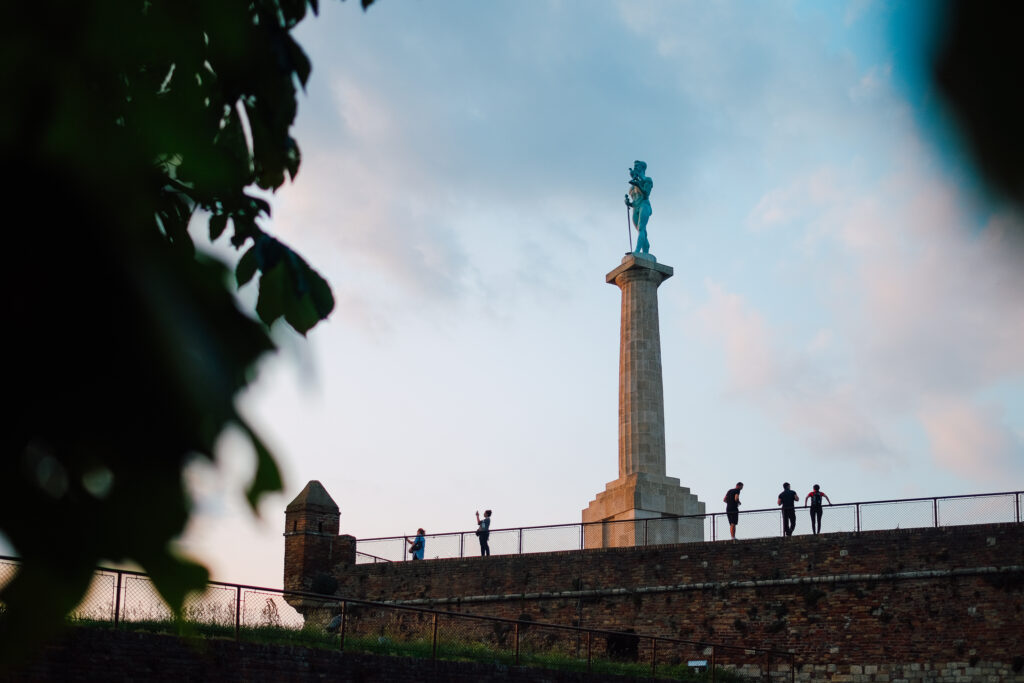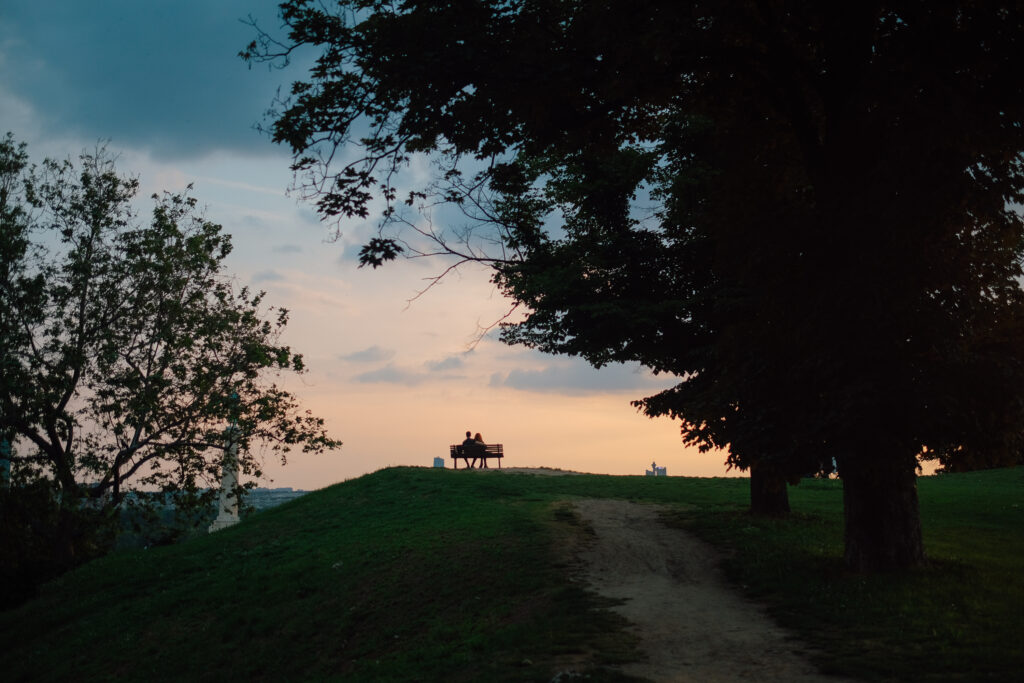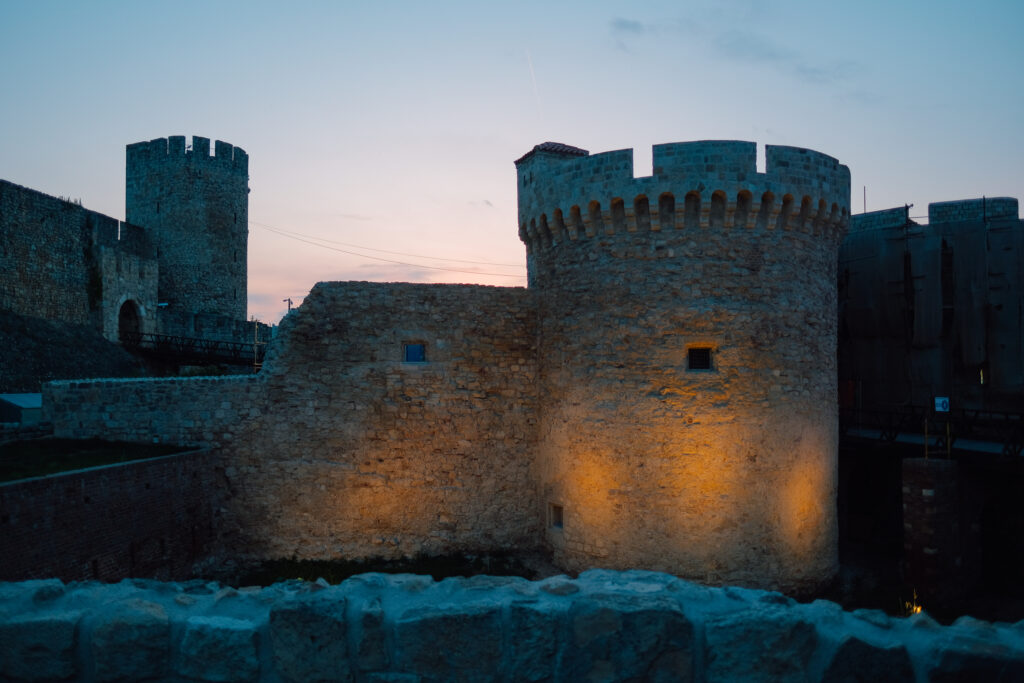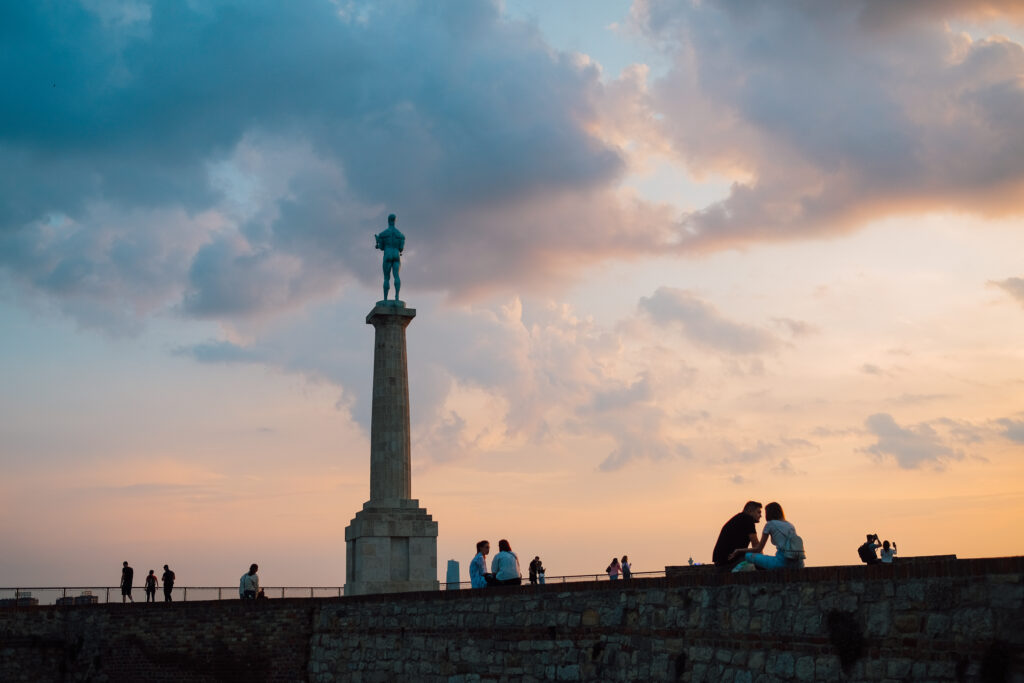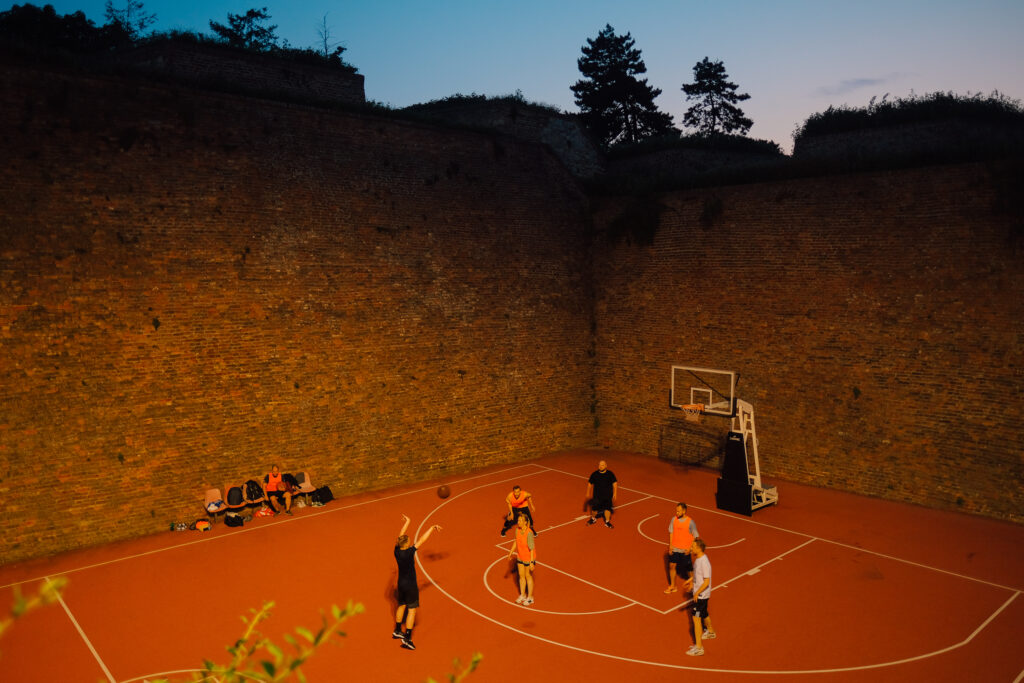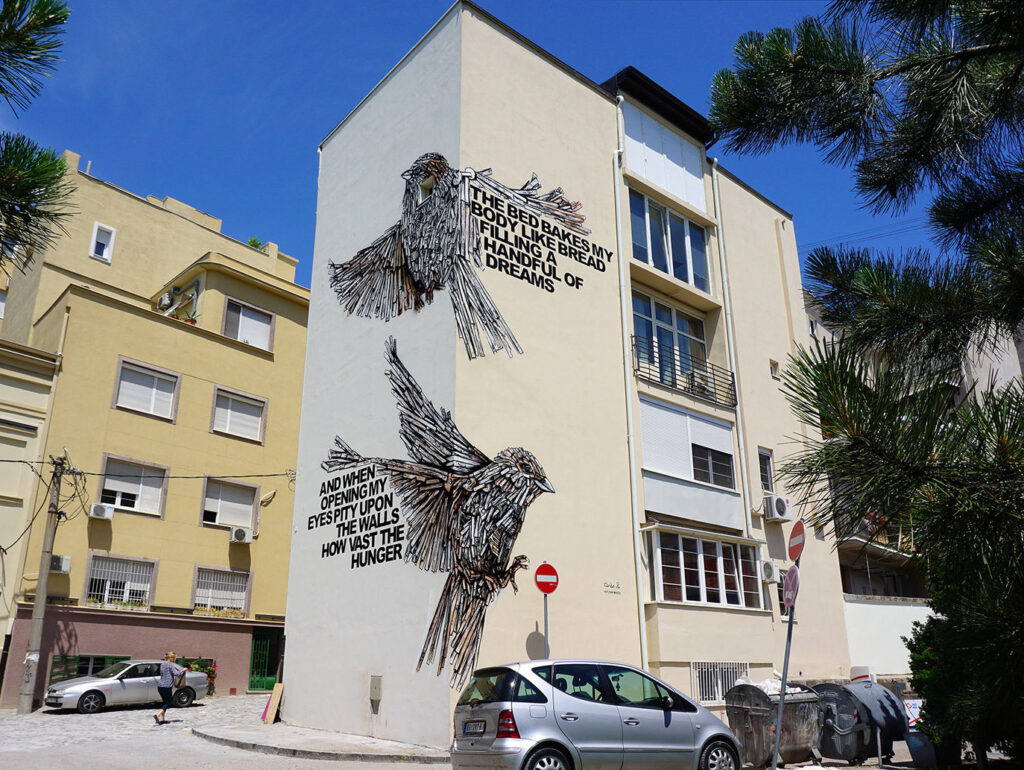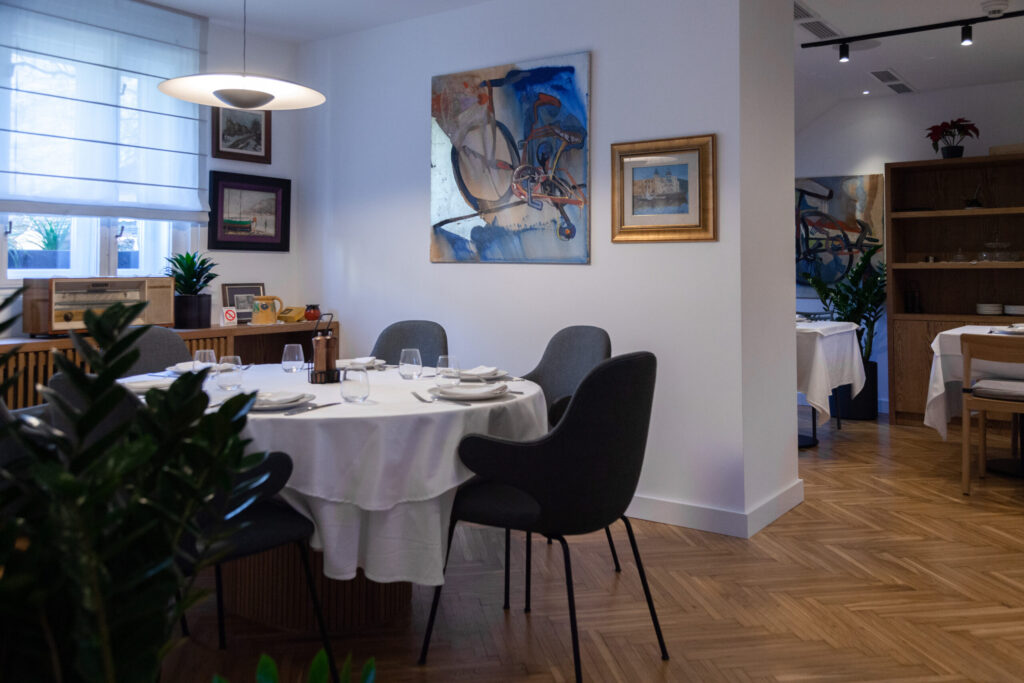The Belgrade fortress is that very place where one can be imbued with the turbulent past of Belgrade. Located at the confluence of the two rivers, this fortress had passed over from hands to hands for many times. Its story begins with the Roman fortifications of the first centuries AD., but the current complex is a stratification of the Middle Ages artifacts, pieces from the Ottoman and Austrian empires period, and of contemporary inclusions. By mistake, the fortress is often called Kalemegdan, which is, in fact, the name of the park in front of it.
It is Kalemegdan park that you go through to get to the fortress when approaching from the city center. It is worth walking around this so-called exhibition of open air sculptures (or visiting the real exhibition at the Art Pavilion of Tsveetha Zuzorich — Umetnički paviljon “Cvijeta Zuzorić”).
Most sculptures of the park are busts of outstanding figures of the country. One of the most impressive sculptures among them is a monument of Gratitude to France, erected after the First World War upon the project of the local sculptor Ivan Meshtrovich. Nearby, the sculpture of the blind Gusle player has been set recently, that is a preserved part of the multi-figure composition of the monument to Karageorgy, which used to be situated on the site of the monument of gratitude to France before the First World War.
From the city side the Austrian fortifications of the XVIII century, built according to the project of the Swiss military engineer Doxat de Demoret, can be examined. However, among the curtain walls, ravelins and bastions an unusual building, dated from the Ottoman period, intruded: it looks like a European one, but only at first glance. Now there is a gallery of the Museum of Natural Science inside, but it is there, where the first Masonic lodge of Belgrade used to be situated.
After passing through the gate complex to the central part of the fortress, you can see a more typical Ottoman building on the left – the Mausoleum of Damad Ali Pasha. Although, neither of three Ottoman outstanding persons buried there is Damad Ali Pasha. This mausoleum was reconstructed in honor of this great vizier, while his own mausoleum was not preserved.
Closer to Sava river there is a white building in a typical Balkan style with wooden elements. Before the First World War there used to be a European looking building of the General Staff in that place. The current building was a temporary solution for the quick and cheap restoration of the building. Not only has it been preserved despite the temporary character, but now it houses the City Institute for Protection of Cultural Monuments. Not far from the building you can find some artifacts from the past: both Roman tombstones and slabs from the Armenian cemetery of the 17—18 centuries.
Closer to the rivers one of the symbols of Belgrade rises, the Victor Monument, work of the local sculptor Ivan Meshtrovich. This monument should be a part of the fountain and was meant to stand in the center of Belgrade, glorifying victories in the Balkan wars, but it was erected only after the First World War and put inside the fortress, not in the city center (the appearance of the monument was considered inappropriate). Not far from the monument there is an Austrian well of the 18th century, known as the “Roman well”. With a little luck, you can go down (working hours are on the fortress website). And this is not the only underground treasure of the fortress: a declassified military bunker from the 1950s is open to the public as well.
The Fountain of Sokollu Mehmed Pasha is a rare object from the 16th century, which is preserved till nowadays, because most of the objects built by the Ottomans in Belgrade during 16th and 17th centuries were demolished by the Austrians in the 18th century. During its last restoration one of the oldest object in the fortress was found nearby — the remnants of the fortifications of the Roman Castrum (fortress)
Walking along the wall towards the Danube you can examine the remains of fortifications in the lower city from different periods: the ruins of the medieval Metropolitan`s Court, the Neboisha tower, the gates of Charles VI, and hamam. Or you can look down with more attention and find unofficial artifacts – carved on the stones images of Eared Joka (ušati Đoka) and Uncle Glisha (Čika Gliša), most likely they are works of amateur sculptors who gave a handle to urban legends (among which there is one calling them vampire images).
Nearby another modern, but quite official sculpture can be found – Monument to Despot Stefan, the ruler of the beginning of the 15th century, when Belgrade belonged to the Serbian state for a little over 20 years. The sculptor Neboisha Mitrich presented this peculiar monument in 1981: Despot has no face, the body is abstract and only his hands are obvious. Behind the monument there is a well preserved part of the medieval fortress together with the Despot tower (one can climb it) and the neighboring gates (Despotova Kapia, Zindan Kapia). However, not everything that looks like a medieval structure in the Belgrade fortress is actually from that period. Nearby there is a Yakshich Tower – the original medieval tower at this place was removed during the reconstruction of the 18th century, and this one is the result of the reconstruction during the interwar period.
During the same period the Ruzhitsa church was also reconstructed according to the project of the white émigré architect Nikolai Krasnov. The statues at the entrance, chandeliers and two metal icons were made of military materials, and the bells are cast from the statue of Emperor Franz Joseph, according to a legend. Next to the church there is a restaurant “Kalemegdan Terrace“, where you can finish your walk enjoying coffee and a perfect view of the Danube and the remains of fortress fortifications.
